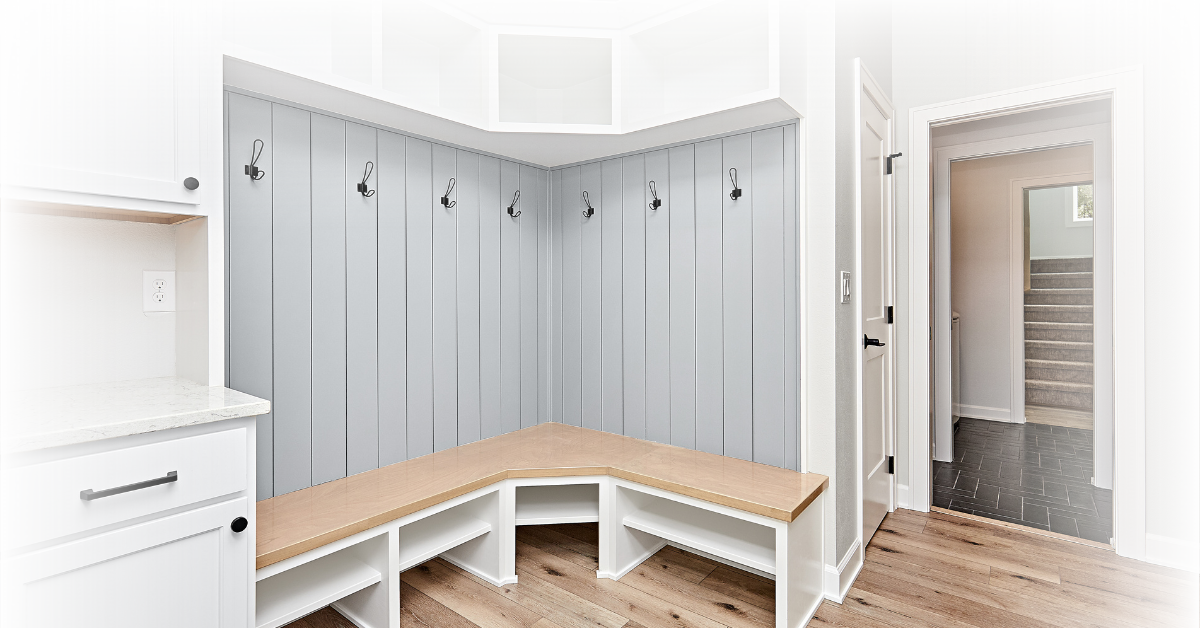How to Create an Organized Mudroom Haven in Time for Winter
If your home is without a mudroom, you may be trying to figure out how to create one before the weather gets messy. Or maybe your family is growing, and your existing mudroom is too small to keep up.
With a little planning and vision, creating an organized mudroom in time for winter is not as difficult as it may sound.
What Is a Mudroom?
As the name implies, a mudroom is a transition space between the outdoors and the rest of your home and is designed to keep muddy and snowy shoes, boots, and other outerwear organized and away from the home’s interior spaces.
Homeowners with kids can use mudrooms to store their children’s sports equipment, backpacks, and other belongings. Those with pets could store pet food, treats, or other supplies. Mudrooms can also double as laundry rooms.
Where Should a Mudroom Be Located?
Ideally, a mudroom should be located right at an entrance to your home – whether that’s a side door, garage, or basement entry. A traditional mudroom will have an entry door as well as a door to the interior of the home. This allows every member of the family to enter the mudroom on rainy, windy, snowy, and cold days without letting the elements into the rest of the home as coming in the front door would do.
How Do I Create a Mudroom?
If you already have a room like the one we describe, you’re halfway there. If you don’t, an experienced home remodeling contractor can create a mudroom for you by adding a bump-out or taking part of your porch, kitchen, laundry room, basement, or garage to create a mudroom.
Your mudroom can be both functional and aesthetically pleasing to match the rest of your home. There are many flooring choices such as LVT (luxury vinyl tile), slate, and flagstone that are attractive, durable, and easy to clean. With color choices and lighting that are pleasing to the eye, you can turn a dark corner into a beautiful space.
Mudroom Storage Ideas You’ll Love
The key to a successful mudroom, beyond keeping the cold air out of the rest of the home, is the organization it provides. Mudroom storage examples include:
- Built-in floor-to-ceiling storage including mudroom cabinets and mudroom cubbies
- Mudroom lockers to hide away sports equipment
- Mudroom hooks to hang all those coats
- Mudroom storage bench where people can sit to take off boots and shoes
- Mudroom closet for cleaning tools and products
When you and the kids come home from work or school, a mudroom provides a drop zone for everything from coats, shoes, and backpacks to briefcases, keys, and mail, keeping your home clean and uncluttered. It’s a win-win!
Keeping It Cozy
You’ll also want a heating and cooling source for your mudroom to keep it comfortable year-round. Radiant heated floors are a popular option for New England mudrooms. They feel great underfoot and provide warmth and coziness to the entire space. Other options for heating and cooling your mudroom include tying into the home’s existing HVAC or installing a mini-split system. Your home remodeling contractor can go over these and other options with you to see what works best for you and your home.
Say yes to less mess and get started on creating an organized mudroom you’ll love. If you want to create or enlarge a mudroom that will help keep your family organized and the rest of your house clean, be sure to work with an experienced home remodeling contractor with the expertise to turn your vision into reality.
Built the Right Way
RWC has over 30 years of experience and is fully licensed & insured with a team ready to help you every step of the way. Make your home truly yours with remodeling from RWC.

